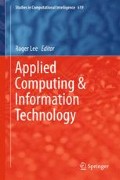Abstract
The purpose of this study was to investigate the effects of lower limb cooling on the work performance and physiological responses during maximal endurance exercise in humans. Eight male subjects underwent a maximal aerobic test using graded exercise on a cycle ergometer. The subjects wore trousers lined with tubes perfused water at 6 or 32 °C, and the target thigh muscle temperatures were 32 or 36 °C, respectively. The maximal working time was significantly lower during 32 °C than under 36 °C conditions. However, the body temperature, heat storage, heart rate and the total sweat loss were significantly lower under the 32 °C condition compared to those under the 36 °C condition. These results suggest that cooling the lower limbs to reach a thigh temperature of approximately 32 °C can reduce the physiological strain during maximal endurance exercise, although the endurance work performance under the 32 °C condition is lower than that under the 36 °C thigh temperature condition.
Access this chapter
Tax calculation will be finalised at checkout
Purchases are for personal use only
References
Chen, G., Yamashita, A., Shibata, K., et al.: Three-dimensional analysis of the work motion using woodworking tools 1. J. Wood Sci. 48, 80–88 (2002)
Yamaguchi, T., Kitamura, K., Uenishi, T., et al.: Comparative analysis of skilled and unskilled behaviors in sewing-machine operation. Biomechanism 16, 207–220 (2002)
Yoshida, T., Ohnishi, A., Shirato, M., et al.: Characteristics of “TAKUMINO-WAZA” in Japanese traditional craft. Mater. Integr. 21, 20–25 (2008)
Nybo, L., Jensen, T., Nielsen, B., et al.: Effects of marked hyperthermia with and without dehydration on VO2 kinetics during intense exercise. J. Appl. Physiol. 90, 1057–1064 (2001)
Racinais, S., Oksa, J.: Temperature and neuromuscular function. Scand. J. Med. Sci. Sports 20(Suppl. 3), 1–18 (2010)
Gonzalez-Alonso, J., Teller, C., Andersen, S.L., et al.: Infuluence of body temperature on the development of fatigue during prolonged exercise in the heat. J. Appl. Physiol. 86, 1032–1039 (1999)
Nielsen, B., Hales, J.R.S., Strange, S., et al.: Human circulatory and thermoregulatory adaptations with heat acclimation and exercise in a hot, dry environment. J. Physiol. 460, 467–485 (1993)
Booth, J., Marino, F., Ward, J.J.: Improved running performance in hot humid conditions following whole body precooling. Med. Sci. Sports Exerc. 29, 943–949 (1997)
Lee, D.T., Haymes, E.M.: Exercise duration and thermoregulatory responses after whole body precooling. J. Appl. Physiol. 79, 1971–1976 (1995)
Marino, F.E.: Methods, advantages, and limitations of body cooling for exercise performance. Br. J. Sports Med. 36, 89–94 (2002)
Ball, D., Burrows, C., Sargeant, A.J.: Human power output during repeated sprint exercise. Eur. J. Appl. Physiol. 79, 360–366 (1999)
Oksa, J., Rintamaki, H., Rissanen, S.: Muscle performance and electromyogram activity of the lower leg muscles with different levels of cold exposure. Eur. J. Appl. Physiol. 75, 484–490 (1997)
Inoue, K., Kume, M., Yoshida, T.: Determination of the optimum muscle temperature for maintaining work performance with attenuation of heat stress in humans. In: 2014 IIAI 3rd International Conference on Advanced Applied Informatics, pp. 795–800 (2014)
Nagamine, S., Suzuki, S.: Anthropometry and body composition of Japanese young men and women. Human Biol. 36, 8–15 (1964)
Matsukawa, T., Kashimoto, S., Ozaki, M., et al.: Temperatures measured by a deep body thermometer (Coretemp) compard with tissue temperatures measured at various depths using needles placed into the sole of the foot. Eur. J. Anaesthesiol. 13, 340–345 (1996)
Roberts, M.F., Wenger, C.B., Stolwijk, J.A., et al.: Skin blood flow and sweating changes following exercise training and heat acclimation. J. Appl. Physiol. 43, 133–137 (1977)
Gagge, A.P., Nishi, Y.: Heat exchange between human skin surface and thermal environment. In: Lee, D.H.K. (ed.) Handbook of physiology. American Physiological Society, Bethesda (1977)
Nielsen, B.: Solar heat load: heat balance during exercise in clothed subjects. Eur. J. Appl. Physiol. 60, 15–25 (1990)
Mitchell, J.W., Nadel, E.R., Stolwijk, J.A.J.: Respiratory weight loss during exercise. J. Appl. Physiol. 32, 474–476 (1972)
Yanagisawa, O., Homma, T., Okuwaki, T., et al.: Effects of cooling on human skin and skeletal muscle. Eur. J. Appl. Physiol. 100, 737–745 (2007)
Barcroft, J., King, W.O.R.: The effect of temperature on the dissociation curve of blood. J. Physiol. 39, 374–384 (1909)
McCutcheon, L.J., Geor, R.J., Hinchcliff, K.W.: Effects of prior exercise on muscle metabolism during sprint exercise in humans. J. Appl. Physiol. 87, 1914–1922 (1999)
Theorell, H.: The effect of temperature on myoglobin. Biochem. Z 73, 268 (1934)
Karvonen, J.: Importance of warm up and cool down on exercise performance. In: Karvonen, J., Lemon, P.W.R., Iliev, I. (eds.) Medicine and sports training and coaching. Karger, Basel (1992)
Edwards, R.H.T., Harris, R.C., Hultman, E., et al.: Effect of temperature on muscle energy metabolism and endurance during successive isometric contractions, sustained to fatigue, of the quadriceps muscle in man. J. Physiol. 220, 335–352 (1972)
Febbraio, M.A., Carey, M.F., Snow, R.J., et al.: Influence of elevated muscle temperature on metabolism during intense, dynamic exercise. Am. J. Physiol. 271, R1251–R1255 (1996)
Febbraio, M.A.: Does muscle function and metabolism affect exercise performance in the heat? Exerc. Sport Sci. Rev. 28, 171–176 (2000)
Hargeaves, M., Angus, D., Howlett, K., et al.: Effect of heat stress on glucose kinetics during exercise. J. Appl. Physiol. 81, 1594–1597 (1996)
Buchthal, F., Kaiser, E., Knappeis, G.G.: Elasticity, viscosity and plasticity in the cross started muscle fibre [abstract]. Acta Physiol. Scand. 8, 1637 (1994)
Wright, V., Johns, R.J.: Quantitative and qualitative analysis of joint stiffness in normal subjects and in patients with connective tissue disease. Ann. Rheum. Dis. 20, 36–46 (1961)
Author information
Authors and Affiliations
Corresponding author
Editor information
Editors and Affiliations
Rights and permissions
Copyright information
© 2016 Springer International Publishing Switzerland
About this paper
Cite this paper
Inoue, K., Kume, M., Yoshida, T. (2016). Effects of Lower Limb Cooling on the Work Performance and Physiological Responses During Maximal Endurance Exercise in Humans. In: Lee, R. (eds) Applied Computing & Information Technology. Studies in Computational Intelligence, vol 619. Springer, Cham. https://doi.org/10.1007/978-3-319-26396-0_11
Download citation
DOI: https://doi.org/10.1007/978-3-319-26396-0_11
Published:
Publisher Name: Springer, Cham
Print ISBN: 978-3-319-26394-6
Online ISBN: 978-3-319-26396-0
eBook Packages: EngineeringEngineering (R0)

